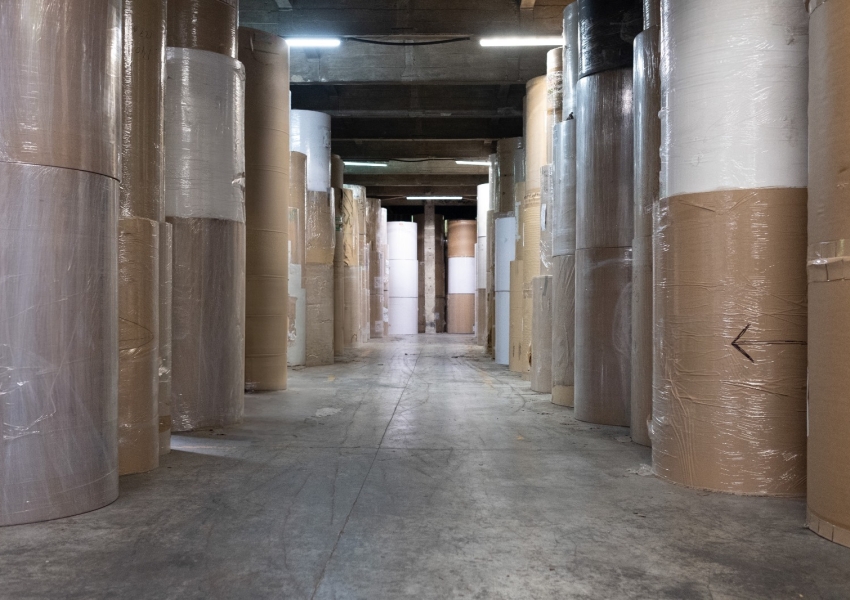In this blog post, we will explore the characteristics that make Kraft paper so unique, its various applications in different sectors, and the benefits it offers as a strong and environmentally friendly material.
What is Kraft Paper?
Kraft paper is produced through the Kraft process, a manufacturing technique that separates wood fibers through a chemical treatment. This process uses chemicals to remove lignin, the component that makes wood rigid, leaving behind pure cellulose fibers, which are longer and stronger than those obtained by other paper manufacturing methods. The result is a robust, flexible material with a characteristic brown appearance, which can also be bleached if necessary.
The term "Kraft" comes from the German word meaning "strength," which is fitting, as this paper is known for its durability and ability to withstand considerable weight, making it an ideal choice for applications requiring high tensile strength.
Characteristics of Kraft Paper
Kraft paper has several characteristics that make it stand out compared to other types of paper. Some of the main qualities include:
- High Strength: Kraft paper is known for its tensile and tear resistance, making it ideal for packaging that must endure rough handling or heavy products.
- Versatility: Its flexibility and adaptability allow Kraft paper to be used in a wide variety of products and applications, from supermarket bags to protective wraps and industrial packaging.
- Sustainability: Kraft paper is biodegradable and recyclable, making it a more eco-friendly option than plastics and other synthetic materials.. Additionally, many companies are adopting Kraft paper as part of their sustainability initiatives.
- Customizability: Kraft paper can be printed, laminated, and treated to meet different aesthetic and functional requirements. This makes it a popular option for product packaging that needs to be visually appealing while remaining durable.
- Breathability: Unlike plastics, Kraft paper allows air to pass through, which can be beneficial for certain products that require ventilation during storage or transportation.
Applications of Kraft Paper
The versatility of Kraft paper makes it ideal for a wide range of applications across various sectors. Below are some of the most common:
- Packaging and Wrapping
The most widespread use of Kraft paper is in the packaging and wrapping industry. This paper is used to make bags, boxes, and envelopes employed to transport and protect all kinds of products. Kraft paper bags are widely used in supermarkets and retail stores for their durability and ease of use. Moreover, many luxury brands have opted to use customized Kraft paper bags, adding a layer of sustainability and aesthetic design to their packaging.
Kraft paper is also ideal for making industrial packaging, such as sacks for chemicals, cement, or bulk materials. Thanks to its high tensile strength and ability to handle heavy weights, it is a preferred choice for storing and transporting products that require additional protection. - Surface Protection
In the construction sector, Kraft paper is used to protect surfaces during painting or renovation work. Due to its strength and low cost, it is an efficient option for covering floors, furniture, and windows, preventing them from being damaged during the process.
Additionally, Kraft paper is used as a protective layer in the furniture and appliance industries, covering surfaces during storage and transportation to prevent scratches, dust, or damage caused by handling. - Food Industry
Kraft paper has a strong presence in the food industry, both in the packaging of products and in the transportation and storage of food. Thanks to its natural properties, this paper is safe for food contact and is used to wrap products like bread, fruits, vegetables, and dry goods.
Additionally, waxed or laminated Kraft paper with food-grade materials is used to make wrappings for foods that require an extra level of protection against moisture, keeping products fresh for longer periods. - Artistic and Design Applications
Kraft paper also holds a prominent place in the world of design and arts. Its rustic texture and natural brown color give it an aesthetic appeal that is highly valued in the creation of artisanal product packaging, labels, posters, and stationery.
In the graphic industry, Kraft paper is used for creating presentations, limited-edition packaging, and other elements where visual design plays an important role. Prints on Kraft paper add an ecological and artisanal touch, making it a preferred option for companies looking to highlight their commitment to sustainability. - Kraft Paper in Gardening and Agriculture
In agriculture and gardening, Kraft paper is used as a material to control weed growth. When placed on the ground, this paper blocks sunlight, inhibiting the growth of unwanted plants without the need for chemicals. Additionally, as it is biodegradable, Kraft paper decomposes naturally over time, enriching the soil and reducing the need to remove the material.
In horticulture, it is also used to wrap and protect plant roots during transportation, ensuring that plants arrive at their destination in optimal condition.
Benefits of Kraft Paper Compared to Other Materials
Kraft paper offers multiple benefits compared to other materials used in packaging and protection industries. Some of the most important are:
- Sustainability: In a time when businesses and consumers are looking to reduce their environmental impact, Kraft paper stands out as an eco-friendly and biodegradable alternative to plastic materials, which tend to be more harmful to the environment.
- Strength: Despite being a paper product, Kraft paper is extremely strong, making it a reliable option for packaging heavy or bulky items. Its durability reduces the risk of breakage during transport or storage.
- Cost Efficiency: Kraft paper is relatively inexpensive compared to other packaging materials, making it an affordable option for companies of all sizes looking to protect their products without significantly increasing operational costs.
- Natural Aesthetic: The natural finish of Kraft paper adds a rustic and elegant touch to products, making it popular among brands looking to convey an image of sustainability, quality, and authenticity.
Conclusion
Kraft paper is a versatile, strong, and sustainable material that has gained a prominent place in numerous industries due to its ability to adapt to different needs and its commitment to the environment. Whether for product packaging, surface protection, or use in agriculture, Kraft paper continues to demonstrate its utility and efficiency.
At Arrosi, we are committed to innovation and sustainability, offering high-quality Kraft paper solutions for various industrial applications. Our Kraft paper not only guarantees product protection and durability but also aligns with the needs of a more sustainable future.




